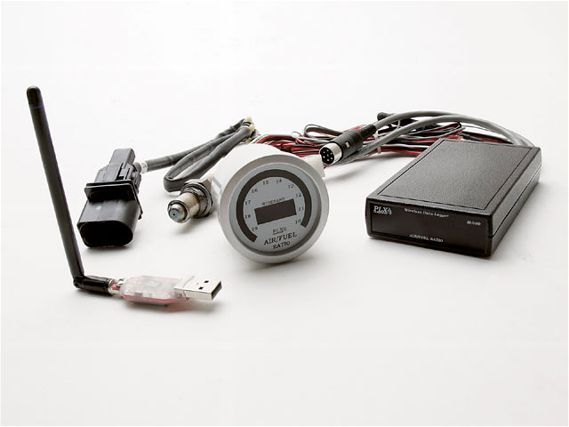 | PLX Devices M-500 Wideband Meter - Tuner's Secret Weapon
| PLX Devices M-500 Wideband Meter - Tuner's Secret Weapon
Like me, if you work in this industry for a decade or more, you will see your share of blown engines. Hell, I've blown up a half dozen B-series engine in my Bumble Bee Integra alone. My fondest memory of blowing up an engine was back in 1995 in my yellow Integra. We were on the Dynamic Autosport's Dynojet chassis dyno and the Integra was equipped with a Drag turbo kit. Previously the car had generated 264 horsepower at 13 psi on a practically bone stock engine with the exception of a turbo kit, Extrude Hone intake and JG Engine Dynamics 1001 camshafts. The engine was running rather rich from the larger RC Engineering 310cc injectors so we knew there was still some juice left in her.
The Integra was a project car for Turbo magazine and we wanted to see if we could squeeze more power out of the engine so we elected to try out a smaller ratio boost dependent regulator from Vortech. At the time air/fuel meters were not too common in the industry and were rather expensive ($2000 - $3000 for a Horiba) so the only thing we had to rely on was a stethoscope to listen for detonation and our wits. However, a stethoscope only works so well with a car running an open downpipe.
At the time I had installed a $40 air/fuel meter, but I doubt it even worked since it ran off the factory single-wire O2 sensor. Worst yet it didn't even have a number readout, it had 10 LEDs that went from red for running rich and green for running lean. You had no idea, one, if it worked or two, how lean or rich you were running. Well on our maiden run with the new lower ratio regulator I was operating the dyno while my friend Mike to listened for detonation and watched the air/fuel meter.
Well, the engine blew up. We disassembled the head and found out that the sleeve of the cylinder wall cracked from detonation. See what I mean about listening for detonation on a car with an open downpipe. After the fact Mike did mentioned he noticed the $40 air/fuel meter on the first green LED for the entire run but forgot to mention it to me while I was running the dyno. What a friend, huh?
Today we are bombarded by several different air/fuel meters to choose from and each is equipped with more features than the original Sony Playstation. And the price of these meters have come down in significantly too, making them much more attainable to the general public. Those $3000 secret weapons of high end tuners of yore can now be used by mortal enthusiasts.
The PLX Devices M-500 wideband air/fuel meter simply amazed us with its capabilities and functions. The key to any precision wideband air/fuel meter is the oxygen sensor. The PLX M-500 comes complete with a five-wire wideband Bosch LSU4.2 oxygen sensor for accurate air/fuel ratio readings from 10:1 to 20:1. The M-500 comes with the wideband controller, O2 sensor and harness, data log harness and USB RX module.
The most ingenious function of the PLX meter is its wireless capabilities. With the use of a laptop the user is able to data log the air/fuel ratio along with six other inputs, two speed and four analog. Making your shotgun monitor or your useless friend obsolete. By being able to data log runs the tuner/user is able to monitor the air/fuel ratio against boost pressure, rpm, air temperature, mass air flow sensor, throttle position or any other factory sensor. On top of that all the data logging can be monitored through the wireless USB RX module (the USB module can also be hard wired) from up to 20 feet from the controller.
Another neat function of the PLX meter is that it comes with two analog outputs enabling the user to replace the factory narrowband oxygen sensor completely with the Bosch sensor. The wideband controller feeds the ECU the narrowband analog while deliver th ewideband data to the M-500. This eliminates the need to weld a second sensor bung to the downpipe or header, greatly reducing installation time and a lot of hassle.
The controller is also compatible to many stand-alone engine management systems allowing air/fuel data logging through the stand-alone unit. This is where the second linear wideband output can be brought into play.
Well the moral of the story is make sure the person you trust to watch the air/fuel ratio meter tells you when it goes lean or your other choice is to data log it with a PLX Devices M-550 air/fuel meter. Trust me, I'll take the PLX over the friend any day.
